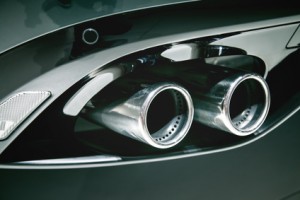Inconel 625
View AMS Numbers >The Nickel Inconel 625 is a non-magnetic nickel-chromium superalloy that features superb corrosion resistance as expected by the presence of the aforementioned transition metals. Moreover, it is very strong and is characterized by the wide range of its fabrication possibilities.
The safe operating temperature range of Nickel Inconel 625 spans from -238℉ (-150℃) to up to 1800℉ (982℃), so it can be used in a wide spectrum of applications that require exceptional corrosion resistance characteristics.
Variable temperatures are not the only thing that the Inconel 625 can withstand, as the same applies for variable pressures and very harsh environments that induce high rates of oxidation. In general, it finds application in sea-water applications, the chemical processing industry, the nuclear energy field, and also the aerospace sector.
As it is evident from the latter especially, the Inconel 625 is also very resistant to cracking, rupture and creeping damage, featuring high tensile strength and extraordinary corrosion versatility.
Tech Steel & Materials offers Nickel Inconel Alloy 625 in 4 sub-type specifications, each in multiple and customized shapes/forms:
- AMS 5581 (Tubing and Custom Tube)
- AMS 5599 (Plate, Sheet or Strip)
- AMS 5666 (Bar, Forging, Ring or Custom Tube)
- AMS 5869 (Plate, Sheet or Strip)
We offer a fully customized line of tube drawing and seamless tubing for Nickel Inconel 625. Learn more about our custom tubing services: Custom Tubing for Your Unique Application
The Composition of Nickel Inconel 625
The composition of the particular alloy is the following:
| Nickel | Chromium | Molybdenum | Iron | Niobium and Tantalum | Cobalt | Manganese | Silicon |
| 58% | 20%-23% | 8%-10% | 5% | 3.15%-4.15% | 1% | 0.5% | 0.5% |
Other elements found in smaller concentrations or traces in the nickel alloy include Aluminum (0.4%), Titanium (0.4%), Carbon (0.1%), Phosphorus (0.015%), and Sulfur (0.015%).
Fabrication
Annealing takes place between 1697℉ (925℃) and 1904℉ (1040℃), while a complete stress relief is achieved at 1598℉ (870℃). The effects of 1-hour annealing at room temperature to the hardness are optimal at 1697℉ (925℃), while significant adverse effects start to take place when going beyond 1900℉ (1038℃).
The optimal annealing point in relation to the tensile and yield strength of the Incoloy 625 is at 1301℉ (705℃), while significant losses start to become evident beyond 1508℉ (820℃).
- Hot Forming – For hot forming and heavy forging, the temperature of the alloy must reach 2147℉ (1175℃), with lighter work possibly being carried out down at 1697℉ (925℃).
- Cold Forming – Nickel Inconel 625 responds well to standard cold forming methods, which is generally a preferable path when trying to achieve optimal tensile strength in medium-temperature operation.
- Welding – All conventional welding methods can be used with Nickel Inconel 625, making it so precious and easy to work with. There are special fillers and electrodes specifically developed for welding this super-alloy, featuring the same corrosion resistance properties.
- Machining – Nickel Inconel 625 can be machined at a maximum surface feet per minute rate of 35 and 10.7 m/min using a steel cutter, and 110 fpm and 34 m/min with a carbide tool.
- Heat Treating – Nickel Inconel 625 requires no heat treatments or precipitation hardening, as it is already atypically strong thanks to the effect of molybdenum and niobium on its nickel and chromium molecular matrix.
Mechanical and Physical Properties
The properties of strength and elongation of Inconel 625 bar are shown in the following table for room temperature conditions and at 1598℉ (870℃).
| Temperature | Yield Strength (0.2% Offset) | Tensile Strength | Elongation (%) | ||
| Ksi | MPa | Ksi | MPa | ||
| Room temp | 69.5 | 479.2 | 140 | 1276 | 54 |
| 1598℉ (870℃) | 76.7 | 528.8 | 144 | 1034 | 34 |
Finally, the physical properties of Inconel 625 can be summarized in the following:
| Density | 8.44 g/cm3 |
| Melting Temperature | 2462℉ (1350℃) |
| Curie Point | -319℉ (-195℃) |
| Poisson’s Ratio (at room temperature) | 0.278 |
| Shear Modulus (at room temperature) | 81.4 GPa |
| Thermal Conductivity (at room temperature) | 9.8 W/m*℃ |
| Electrical Resistivity (at room temperature) | 129 μΩ*cm |
Common Uses of Nickel Inconel Alloy 625
As Inconel 625 is an especially expensive material, it is commonly found in selected fields were compromises are not an option. The most notable usage examples are given below.
Sea-water
- The core of mooring cables
- Submarine propeller blades
- Submarine propulsion unit caging
- Navy boat exhaust ducts
- Undersea communication cables sheathing
- Other submerged systems or instruments
Aerospace
- Aircraft ducts and exhausts
- Thrust-reversers
- Engine compartment housing
- Fuel and hydraulics tubing
- Turbine seals
Nuclear
- Reactor core components
- Fuel control rod components
Chemical Processing
- General plant equipment
- Vessels
- Honeycomb heat exchangers
- Various types of industrial tubing
- Distillation columns
- Valves
Other
- Super-heated potassium and sodium solar power stations tubing



 Tech Steel & Materials
Tech Steel & Materials